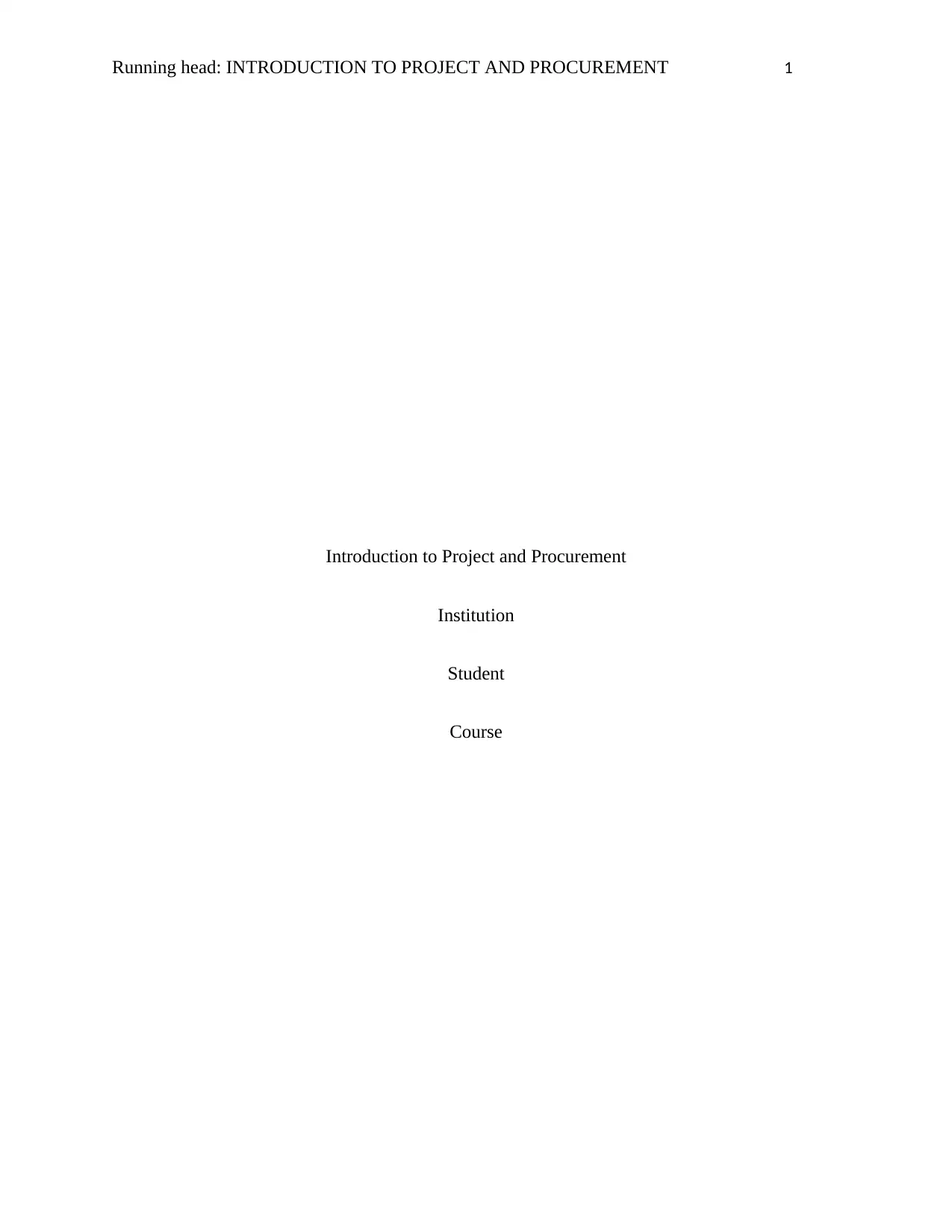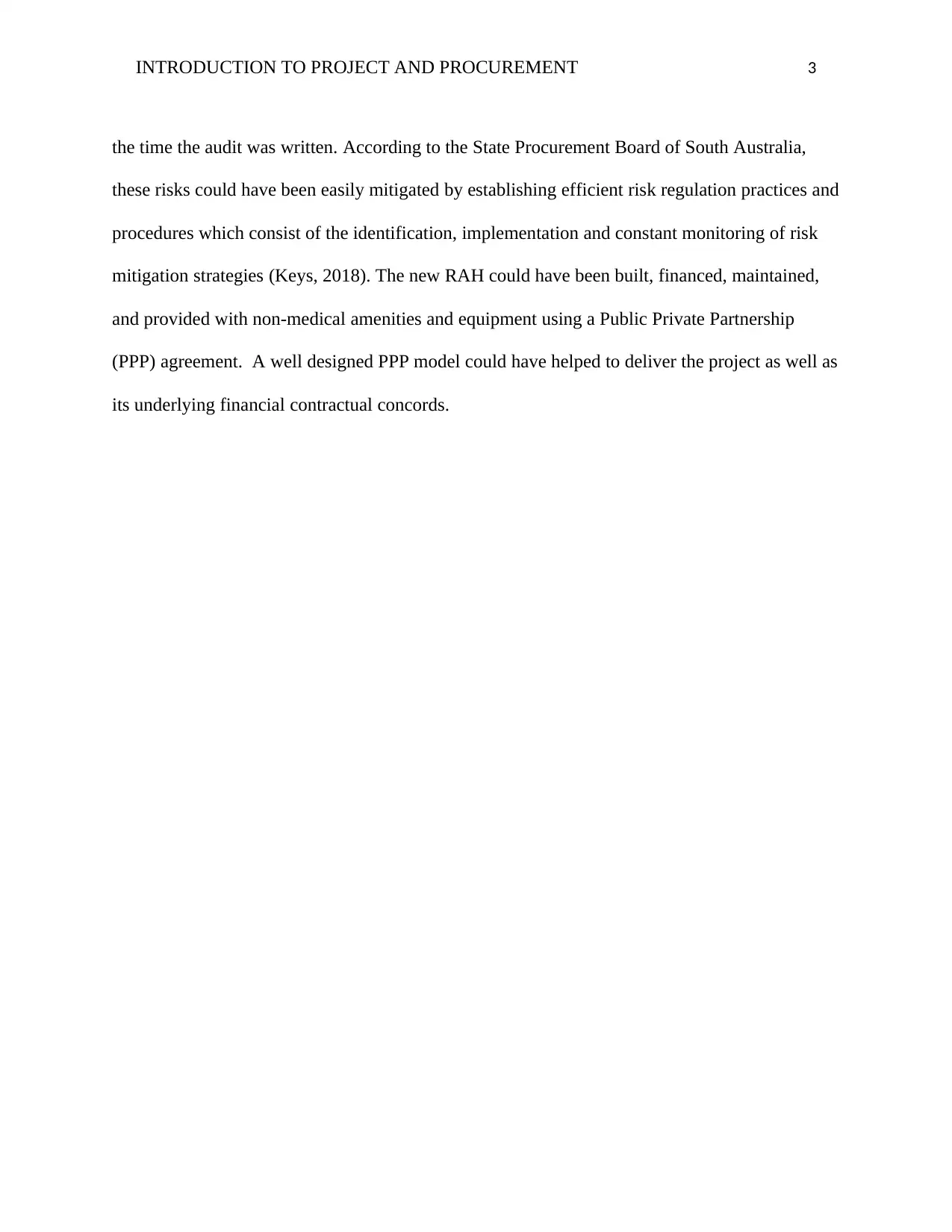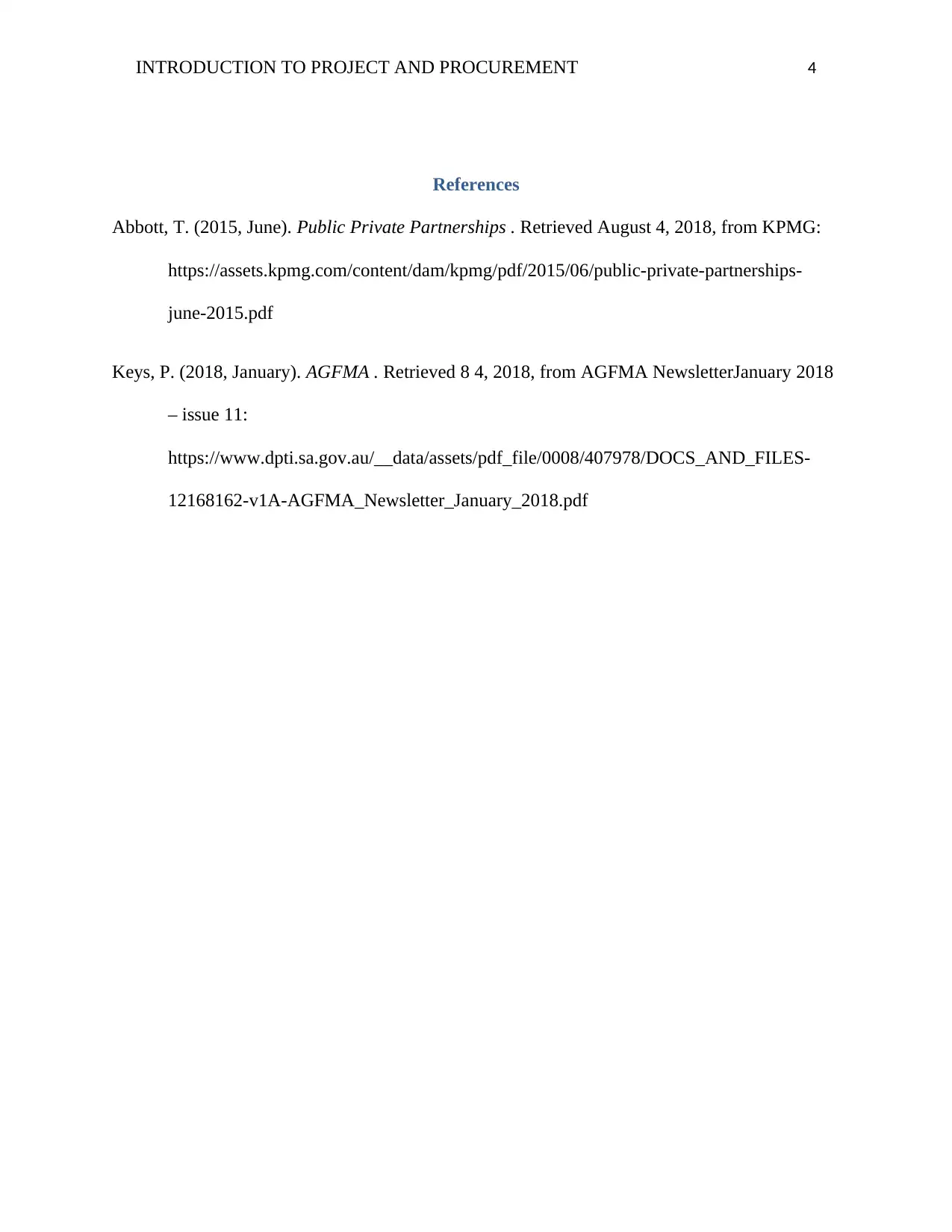Project Procurement: Public-Private Partnerships and Risk Mitigation
VerifiedAdded on 2023/06/10
|4
|539
|499
Essay
AI Summary
This essay provides an introduction to project procurement methods, with a specific focus on Public-Private Partnerships (PPPs). It discusses various procurement approaches, highlighting PPPs as a contractual agreement between public and private entities to deliver public facilities or services. The essay also addresses common risks associated with procurement contractual processes, such as delivery, fraud, quality, and cost risks, using the case of the new Royal Adelaide Hospital as an example of the consequences of failing to mitigate these risks. It suggests that a well-designed PPP model could have aided in the project's delivery and financial agreements, emphasizing the importance of risk regulation practices in project management. Desklib offers a platform for students to access this and other solved assignments.
1 out of 4











![[object Object]](/_next/static/media/star-bottom.7253800d.svg)